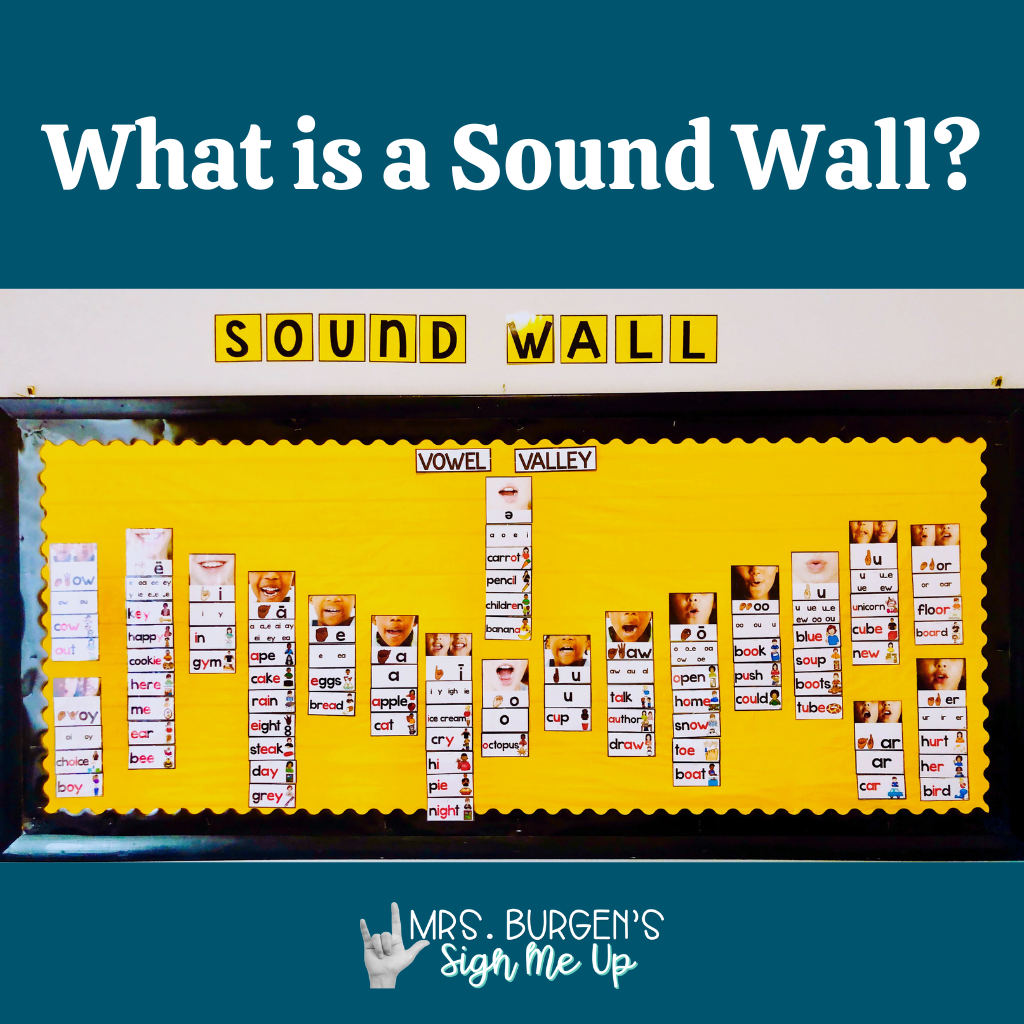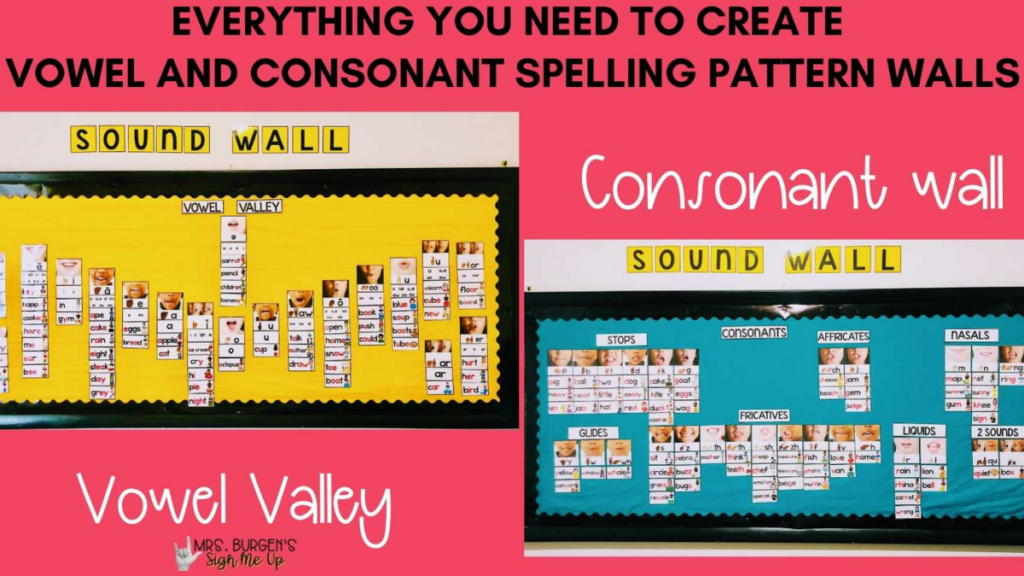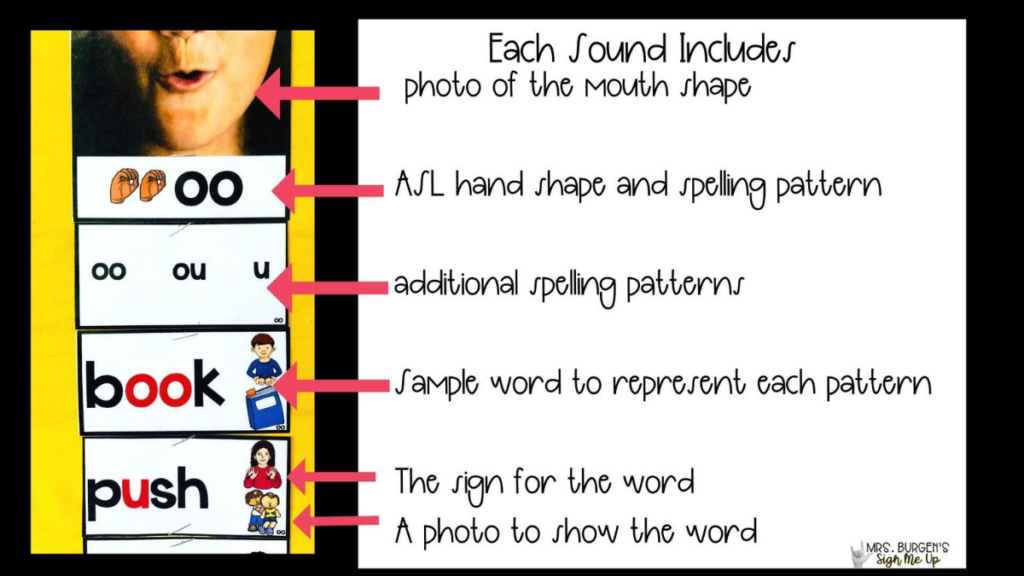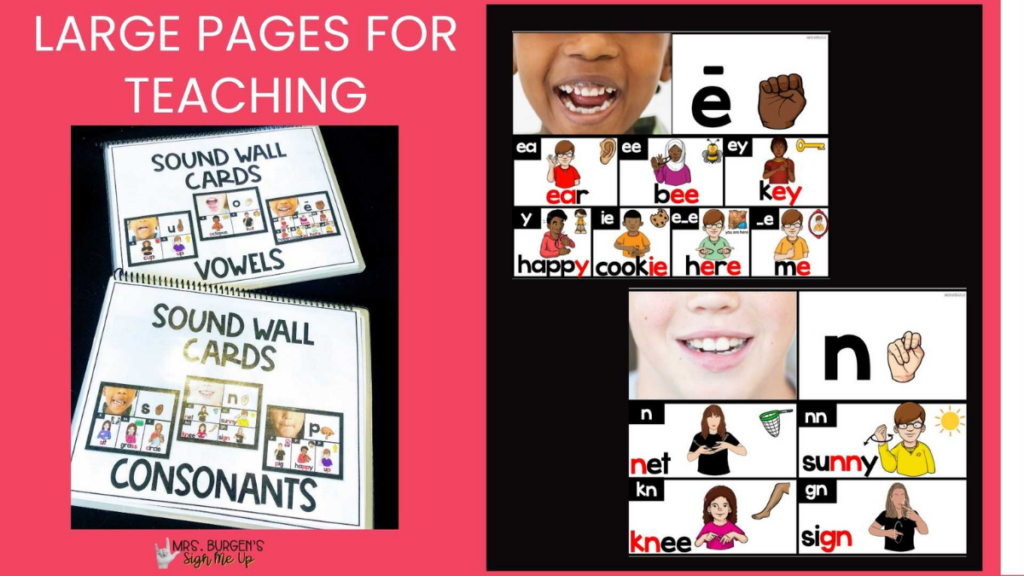
What is a Sound Wall?
A sound wall is a display of letters, words, and sounds used in phonics instruction. To use a sound wall to teach reading, you can follow these steps:
- Introduce the sounds and their corresponding letters, either through whole-group instruction or individual assessments to determine student mastery.
- Use the sound wall to reinforce the sounds and letters regularly. Encourage students to reference it as they learn to decode words.
- Practice blending sounds to read words, starting with simple CVC (consonant-vowel-consonant) words and moving to more complex words.
- Encourage students to use the sound wall to spell words as they write. This will reinforce their understanding of the relationships between letters and sounds.
- Differentiate instruction as needed, providing support for students who need extra help. Be sure to challenge students who are ready for more advanced work.
It’s important to note that a sound wall is just one tool for teaching phonics and reading. It should be used in conjunction with other instructional methods, such as shared reading, guided reading, and independent reading.

How can I use a sound wall with my deaf and hard of hearing students?
Using your sound wall with your deaf and hard of hearing students may look a little different than the typical use of a sound wall.
- Be aware of the sounds your student does or does not have auditory access to. You may need to differentiate how you teach the sound based on your student’s accessibility to the the sound. Knowing a little about your student’s personal audiogram, can be somewhat helpful in this area. However, it’s not something you should whole-heartedly depend on by any means. Simply testing out each isolated sound with a student is a much better indicator to determine if and how the student is hearing the sound. Some sounds may be distorted for a student using hearing aids or cochlear implants.
- Don’t be afraid to use visual aids to make the sound as visible and as tactile as possible. Show the student what the sound looks like on the mouth using real pictures and a mirror if you have that available. Use the sound in familiar words that the student may know. /a/ /a/ apple /a/ /a/ ant. Show a visual of the word and the English print you are using. Be sure the that the student knows the word and the specific letter sound you are targeting. (this is a bit of a departure from typical phonemic awareness teaching patterns, but it’s essential to make sure your student understands what you are working on.
- Pair fingerspelling with the mouth pictures to differential similar sounds. MANY sounds in the English language sound similar even to the most astute listener. Providing a visual will help your students learn how to differentiate many of the sounds. For example, the letter /a/ can make 5 different sounds such as in the words cat, cake, author, car, banana. It can also be used in 12 different spelling patterns; short a, long a, a_e, ai, ay, ei, ey, ea, ar, aw, and schwa. Using fingerspelling and mouth movements together will demonstrate how these letter patterns differentiate.

Using the Sound Wall to differentiate
In a typical classroom with hearing students, best practice based on the science of reading, indicates that teachers teach the phoneme before pairing to a grapheme (the sound before the printed letter).
However, with deaf and hard of hearing students, often more context is necessary. You want your students to feel confident in what they are learning and help them to know that they have the skills to problem solve. In addition, with deaf and hard of hearing students, you are ALWAYS teaching language and vocabulary. It is essential that your students have an understanding of the vocabulary BEFORE you teach decoding. Familiarity with the vocabulary is key.
Often, we use the language of /sh/ like in sheep or /ch/ like in chef. However, if your student doesn’t have even this basic vocabulary, then those comparisons are not likely to help your student in any way. Providing visuals when teaching each sound pattern allows the students to develop familiarity with the base vocabulary.
Need to add ASL and Picture support to your sound wall? No worries teachers, I’ve got you! Just click on any picture in this post or get a closer look by clicking HERE.

Happy Teaching!


